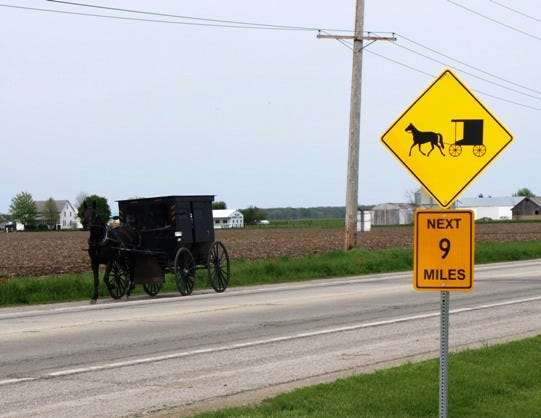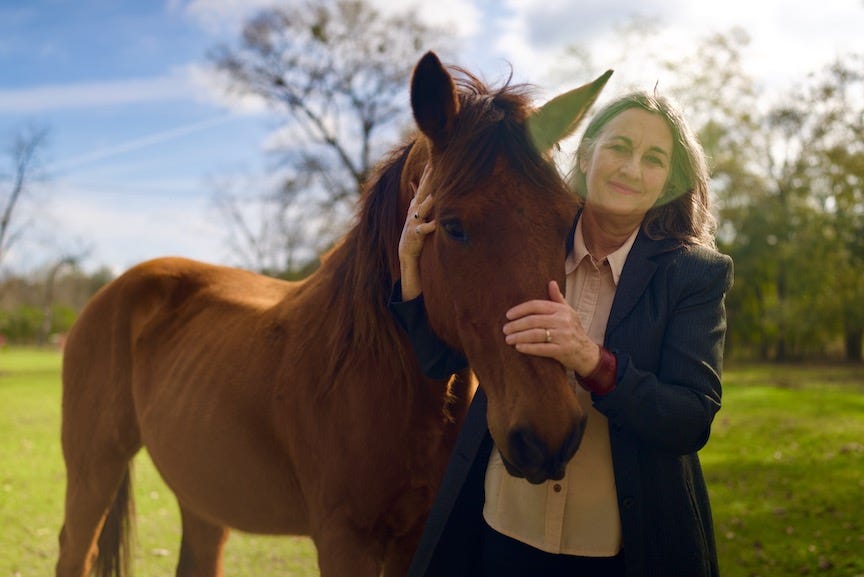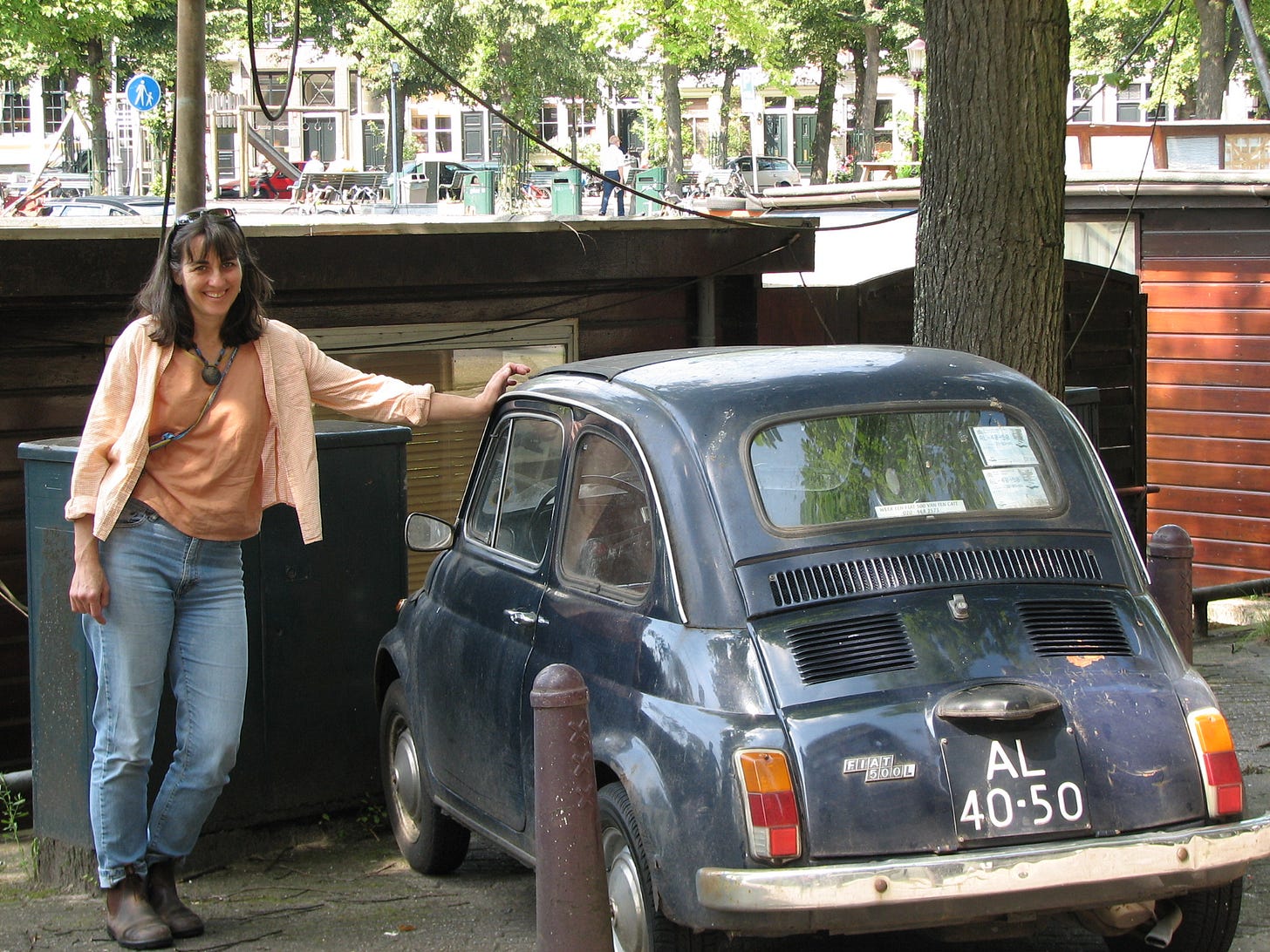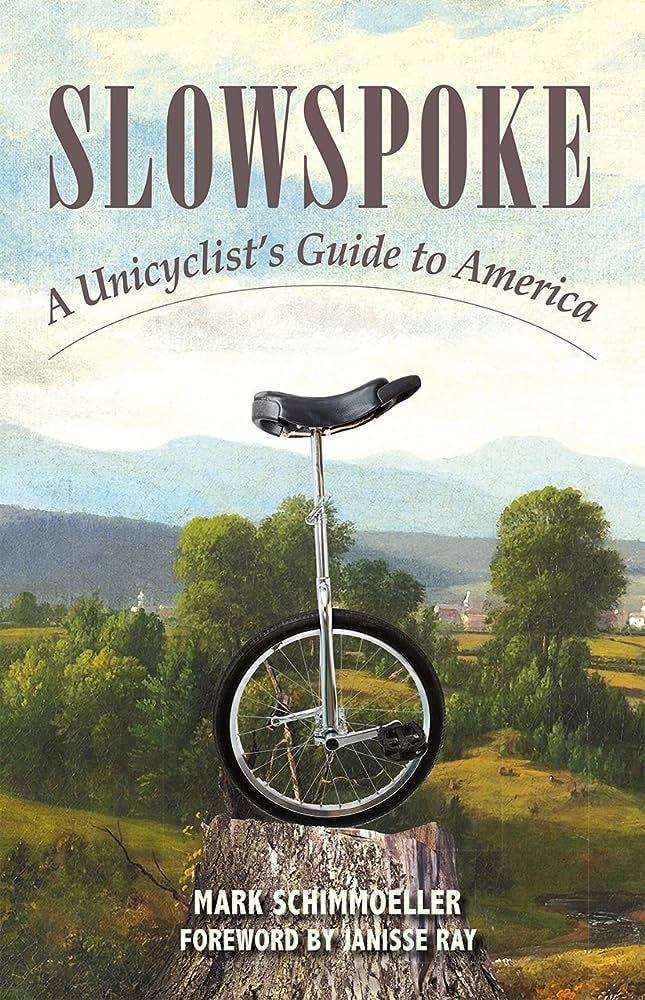Every driver’s manual I’ve seen leaves out vital, crucial, life-saving information that every driver, especially new, needs to know.
Yes, it’s important to understand the meaning of a certain sign.

It’s important to know who has the right-of-way at a 4-way stop, how to parallel park, and what to do when passing a bicyclist.
But most driving manuals don’t actually tell drivers what they desperately need to know. I found this out when my newly grown daughter was studying for her driving test, and I pored through the government booklet with her.
If omission is a form of lying, and I believe that it is, then most driving manuals lie, not in the information included but in that which is excluded, and every time a narrative is false in any way, suffering occurs. Any driving guide that doesn’t tell an environmental story—that doesn’t implicate the driver in the breakdown of the earth’s systems—is lying.
A few days ago I found myself in a vehicle with a friend who was not an environmentally friendly driver, although no doubt he drives like most Americans. I kept my mouth shut then, but I’m speaking up now.
I have built a driving manual for American drivers. Please share it far and wide.
Know that your foot on the gas pedal is destroying the earth’s atmosphere by choking it with carbon dioxide. Your foot on this particular pedal directly correlates with violent storms, with fires, with floods, with rising oceans, and with the million other crises that accompany climate destabilization. Therefore, please do the following. Ask yourself when you open the vehicle door: Can I walk or bike where I want to go? Can I take public transportation? Do I really need to go? Can this errand be combined with another errand tomorrow? Could someone do this errand for me?
Summary: Try to keep your foot off this pedal as much as possible.
If you must drive, touch the gas pedal as lightly as possible. A heavy foot destroys many things we love, including life itself, including our own lives. This means you need to drive as slowly as possible. Drive a speed that is below the limit. Be a creeper. Save the lives of turtles, snakes, frogs, butterflies, dragonflies, owls, and everything else a speeding car is wont to terminate.
Summary: Slow down.
Accelerate slowly. I found a blogpost that lists 6 reasons why hard acceleration is a bad idea.
It wastes fuel.
It leads to hard braking.
It causes wear and tear on the vehicle.
It’s bad for the enviro.
It puts passengers at risk.
It can cause cargo to shift.
The Canadian government encourages its drivers to imagine an open cup of coffee on the dashboard. They advise taking 5 seconds to accelerate from a full stop to 20 km/hour. That’s 5 seconds to get to 12 miles/hour.
Summary: Don’t spill the coffee.
The U.S. Department of Energy says that driving habits such as hard accelerations and hard braking can lower gas mileage between 15 and 30 percent at highway speeds and between 10 and 40 percent in stop-and-go traffic.
Braking means slowing down and stopping. If you need to slow, that means you are already moving. To move you have to press the gas pedal. Therefore, braking for any reason means that you are negating the gas used in forward motion. Braking is wasting fuel. Braking is destroying the atmosphere for no good reason. Therefore, be extremely conservative with braking. 1
Summary: Coast to decelerate.
How can you safely brake less? Do not simply watch the 600 feet in front of you for obstructions in the roadway. Watch as far down the road as possible. If you see a red light ¼ mile away, why rush up to it then slam on brakes? Why not begin to slow down the minute you see a red light? If I see a red light ahead, I take my foot OFF the gas pedal immediately. I do not immediately slam the brakes. I slow by allowing the inertia of the car to slow itself without needlessly wasting gasoline I’ve already used.
Summary: As soon as you see a red light (and it is safe to do so), take your foot off the gas.
A stop sign is the same as a red light.
Summary: As soon as you see a stop sign (and it is safe to do so), take your foot off the gas.
A better way to say that is to anticipate traffic. Pay attention as far ahead as you can see to what’s coming up. Watch for pedestrians, animals, and other traffic so that you can maintain your speed as steady as possible.
Summary: Anticipate traffic.
Maintain a steady speed. Here’s what Canada tells its citizens.
Tests have shown that varying your speed up and down between 75 and 85 km per hour every 18 seconds can increase your fuel use by 20%.
Translated to the American Imperial system, that means moving between 46 and 53 mph every 18 seconds. You use 20% more fuel.
Summary: Go like the tortoise.
There is one exception. Work with the terrain. When going downhill, let gravity take over. Allow your speed to drop when moving uphill, then regain momentum when traveling downhill.
Summary: Roller-coasting is fun.
When you gas up your vehicle, please read the warning signs. It is important that you turn off your vehicle while refueling it. I understand that you are used to privilege and that you want your vehicle to be cool (if it’s summer) or warm (if it’s winter) when you reenter. However, gasoline fumes are violently dangerous—they are explosive. As temperatures rise, explosions will become more likely. When you leave your vehicle running while refueling, you endanger not only your own life and property, you endanger the lives and properties of those around you, including the workers and owners at the gas stations.
Never idle more than 30 seconds. Researchers from the Department of Energy report that idling from big trucks and personal vehicles wastes around 6 billion gallons of fuel annually. I got that from a blog.
Remove heavy items from the car if they don’t need to be there. Remove items atop a car. This weight and bulk causes your fuel efficiency to plummet.
Make sure your tires are inflated to the proper amount.
Learn how to use a manual transmission properly. The higher the rpm, the more fuel the vehicle is burning, so learn how to transition smoothly through the gears in order to build speed.
Use the vehicle’s AC as little as possible. (I’m guilty as charged on this one. Gonna do better.)
Track fuel consumption. Try to go longer and longer without refilling your tank.
Choose the most fuel-efficient car you can buy. Let 50 mpg be your starting point.
Choose a vehicle with efficiency indicators. I really learned how to conserve fuel when we purchased our first (used) Prius 20 years ago.2 It had a computer screen that tracked fuel usage. The screen showed mpgs minute by minute and also recorded 5-minute averages so that you could look back at a 30-minute trip and see the trends. Traffic congestion, hills, and speed would require more fuel, causing the engine to switch from electric to gasoline. If no gasoline was used in a 5-minute period, that segment lit up with 100 mpg, the highest the screen allowed. Raven, my husband, and I made a competition out of who could get the most 100 mpg screen in a 30-minute period. I was great at it, but he eventually won the lifetime achievement award. One evening coming down out of the North Carolina mountains he managed to use only the electric engine for 30 minutes, and he filled out the entire screen with 100s. That meant that he drove for 30 minutes without using gasoline at all.
Get rid of your car completely.
All this is within reason. Of course you have to brake.
I just want you to know that this first-generation Prius I mentioned in #18 had over 300K miles on it when we gave it to our friend Peter Peteet a few years ago. Peter is a poet, photographer, and hybrid car mechanic based in Decatur. We figured that he would be the only person we knew who could keep the car alive. He’s still driving it.
Peter recently he gave us a sailboat. We’ll think of him sailing along in the Prius when we’re sitting still on a windless day in Altamaha Sound.
Canada Made a Course
Here’s a eco-driving course produced by Canada.
P.S. I probably need to rewrite the manual in a nicer tone, don’t I?
Recommended Reading
All of this brought to mind a wonderful book I read a few years ago, Slowspoke: A Unicyclist’s Guide to America by my friend Mark Schimmoeller. It was published in 2014 by Chelsea Green, and I got to write the foreward to it. Whoa, that was a wild book. Mark pedaled his unicycle across the entire country. For real.
New Link for Co-Working Sessions
We’re still meeting every Wednesday at lunch, 11:30-12:30, to work silently together. I’ve had to change the Zoom link and am now keeping it closer to my chest, but if you want it, just say the word and I’ll send it directly to you.








Love, love, love! As a CDL holder (former team truck driver), I find it ironic how much of this is taught in CDL school and in the company's safety programs. Wouldn't it be great if it could be taught to the new drivers as well? It would make us all safer on the roads and be great for the environment as well. Another point that resonated with me, is driving as little as possible. I live 20 minutes from town and when I was working remotely, I only went to town once a week, if that. I would sit at home watching neighbors leave home two or three times per day and continually ask myself, "Why? Where are the coming and going from? Am I just a weirdo/shut in/anti-social hermit because I never leave home?" Of course, the ironic thing here is that I grew up on this same farm and I remember being a teenager feeling isolated from the world because my daddy only went to town once/week too. I am my father's daughter after all.
Yes, yes, yes to all of this. We drove a 2002 Honda Insight Hybrid for years and it taught us to hypermile and conserve fuel. We now have a Tesla but before buying it we installed solar panels. We now have a battery backup because, well, California and PG&E and wildfires. We don’t drive much and we’re conservative when we do but we’re happy our fuel is coming from the sun. And yes, the old Honda Insight is still working. We gave it to our daughter.
You began the article with that lovely photo of the horse and buggy which brings me to a pet peeve on the road. It seems drivers today just don’t understand that the less power you have, the greater your right of way. So many drivers roar around bicyclists and pedestrians with little concern for their safety. I would fear for any horse and buggy on California roads. Can’t we all just be a little kinder and more considerate?